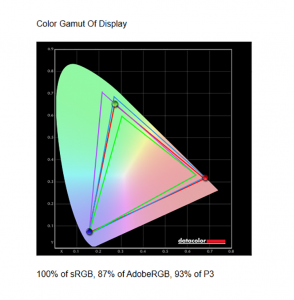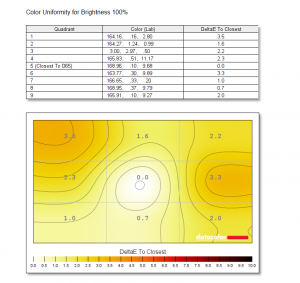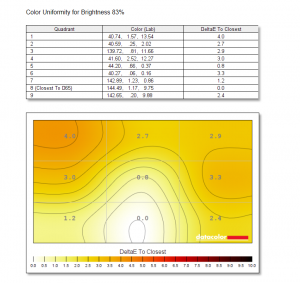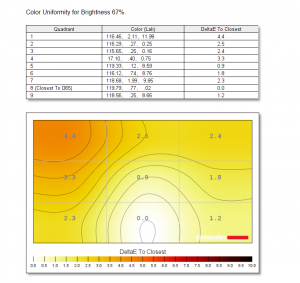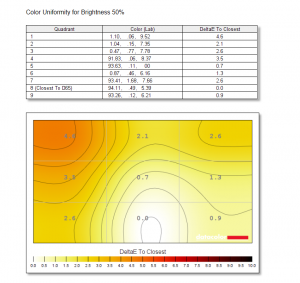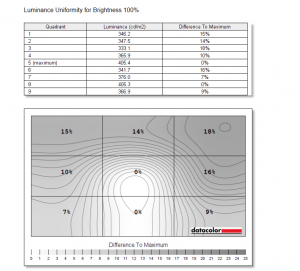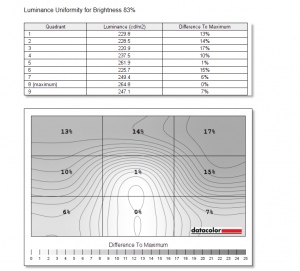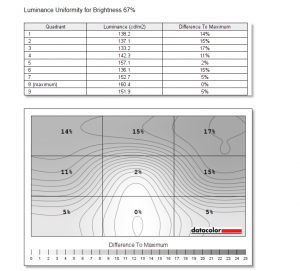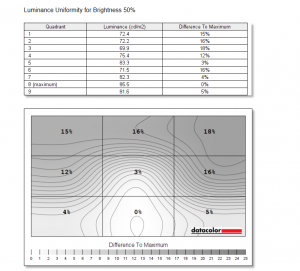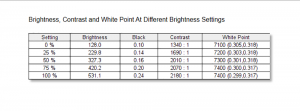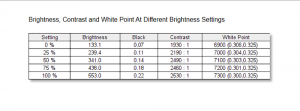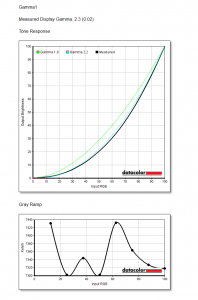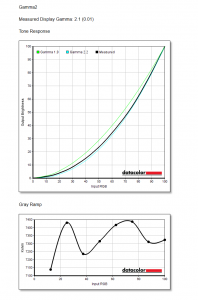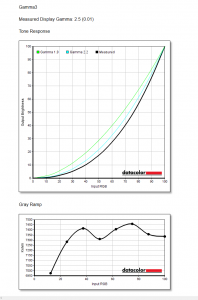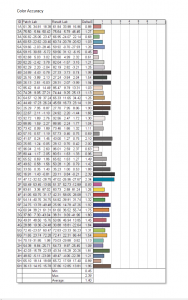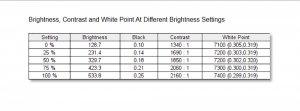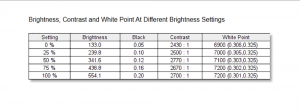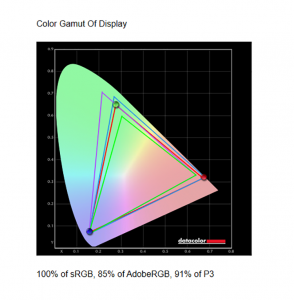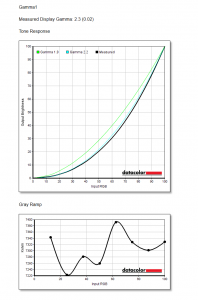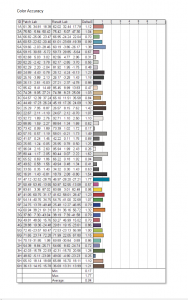Our main test involves using a DataColor SpyderX Colorimeter to assess a display’s image quality. The device sits on top of the screen while the software generates colour tones and patterns, which it compares against predetermined values to work out how accurate the screen is.
The results show –
- A monitor’s maximum brightness in candelas or cd/m2 at various levels set in the OSD.
- A monitor’s contrast ratio at various brightness levels in the OSD.
- The brightness deviation across the panel.
- The black and white points.
- The colour accuracy, expressed as a Delta E ratio, with a result under 3 being fine for normal use, and under 2 being great for colour-accurate design work.
- The exact gamma levels, with a comparison against preset settings in the OSD.
We first run this test with the display in its default, out-of-the-box state, with all settings on default. We then calibrate the screen using the Spyder software and run the test again.
Pre-calibration
Starting with our gamut coverage, we get decent enough results from this panel. 100% sRGB coverage is reported, as we would expect, while we also see 87% AdobeRGB and 93% of the DCI-P3 space. The latter two results aren't the best we've ever seen, but as this is an Agon-series (gaming oriented) screen, the results are good enough.
Overall colour uniformity is also decent, there is a bit of variation towards the top left corner, but nothing terrible at all.
Luminance uniformity is less impressive however, with up to 18% deviation reported. Larger screens usually struggle in this regard so it's not overly surprising, and in general use it's not something that I noticed – but it is measurable.
Next we come to brightness and contrast. Starting with the latter, it's great to see peak brightness hit 531 cd/m2, with the 50% setting offering 327 cd/m2. The only downside is the screen doesn't get overly dim, with 0% brightness still registering 128 nits.
As for contrast, AOC rates the AG493UCX at 3000:1, but using default settings the highest we saw was 2180:1 when using 100% brightness. We could get a bit more out of it when pushing the contrast setting within the OSD to its maximum figure of 100, the highest value now reported by our SpyderX hit 2530:1.
Next we come to gamma. Here there are three settings within the OSD – Gamma1, Gamma 2 and Gamma3. Gamma1 – the default setting – reports an actual gamma value of 2.3, while Gamma2 and Gamma3 hit values of 2.1 and 2.5, respectively. This means none of the settings give us a gamma value of 2.2, which is the standard we'd be aiming for. It's also strange the values go from 2.3, to 2.1, then to 2.5 – but at least the steps of 0.2 are consistent (just muddled up.)
Lastly, colour accuracy is very good for the AG493UCX. We hit an average deltaE of 1.40, and while that isn't the best we have seen, it is still very good for a gaming-grade display.
Post-calibration
After calibrating the screen with our SpyderX, default contrast remained consistent. We were, however, able to hit a ratio of 2700:1 when manually cranking the contrast level to 100 in the OSD, which is an increase over the previous maximum value before calibration.
The gamut coverage has now got slightly worse – we still get 100% sRGB coverage, but AdobeRGB and DCI-P3 reporting is down 2% each. Gamma1, though, still reports a gamma value of 2.3.
Colour accuracy has improved however, with an average deltaE of just 0.94, which really is an excellent result.
Be sure to check out our sponsors store EKWB here
 KitGuru KitGuru.net – Tech News | Hardware News | Hardware Reviews | IOS | Mobile | Gaming | Graphics Cards
KitGuru KitGuru.net – Tech News | Hardware News | Hardware Reviews | IOS | Mobile | Gaming | Graphics Cards



